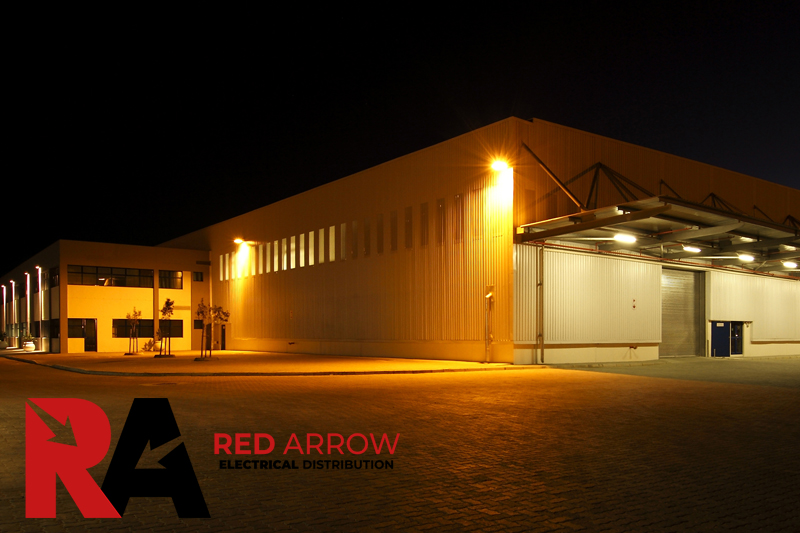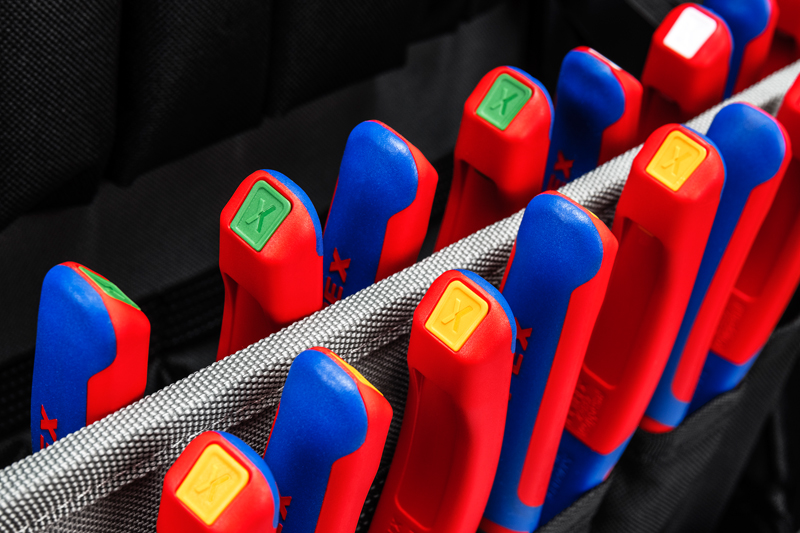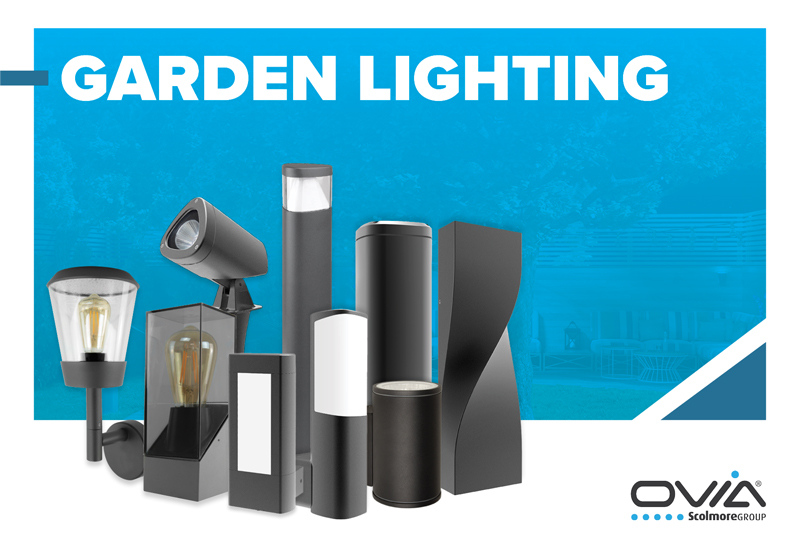PEW hears from Red Arrow on the social and ecological impact of external commercial lighting – and how electricians can use the right products and design to limit light pollution while delivering the lighting their clients need.
In the UK, we experience a national average of just eight hours of daylight during the winter months. Artificial outdoor lighting is a necessity to maintain safe, secure and functional spaces outdoors – from car parks to sports arenas, college campuses to industrial loading bays. Yet while external lighting has an important role to play in the safety and security of our commercial, industrial and recreational spaces, its impact on the local environment, nearby dwellings and roadways also need to be considered – as well as the energy it consumes.
When it comes to outdoor lighting, electricians need to maximise illumination where it is needed while minimising light pollution in the surrounding areas and reducing energy consumption. In other words, they need to get the right light, in the right place that activates at the right time.
Here, we will look at the regulations and considerations that electricians need to be aware of when installing commercial or industrial lighting outdoors, and how to solve the most common outdoor lighting issues.
What regulations cover outdoor lighting?
While there are no regulations (outside of usual Part P Building Regulations) governing the installation of outdoor lighting, external lighting can fall foul of the Clean Neighbourhoods and Environment Act 2005 after it has been installed. Under this law, lighting can be deemed a ‘statutory nuisance’, with the premise owners being requested to remove or adjust the offending light source – a frustration for the client, and for the electrician who is then called back to the site.
Some premises are exempt from this law, including transport depots, harbours, airports, army bases and prisons. However, it is recommended that electricians take steps to reduce nuisance and light pollution wherever possible, in order to avoid complaints to the client after installation and reduce environmental concerns.
The Royal Commission on Environmental Pollution also conducted a report, Artificial Light in the Environment, outlining the impact of outdoor lighting and recommendations for more sustainable solutions. While these are not a legal standard, lighting that conforms to these recommendations are increasingly in demand from highway authorities, commercial premises owners and recreational space managers in order for them to do their part in protecting the local landscape, as well as avoid conflict with the local community and ecological welfare groups.
What are the biggest problems caused by external lighting?
- Light intrusion is where lighting spills out of the desired field of illumination and into surrounding areas. This can be annoying for nearby inhabitants, as well as a dangerous distraction to drivers and a disruption to nocturnal wildlife in the area, as detailed in ILP GN01.
- Sky glow pertains to a general glow in the night sky that can be caused by both natural and artificial light sources, but is most often seen where large amounts of outdoor lighting is in situ – such as towns or industrial parks. As well as being unsightly, it can also disturb wildlife by mimicking dawn or twilight.
- Glare relates to bright light that is uncomfortable to view: for instance, a bright security light in an otherwise dimly lit cul-de-sac, or an overly-bright floodlight outside of a warehouse.
- Reflective glare is caused by certain building surfaces, like smooth stone and metallic panels. When lit by floodlights or uplighters, they can imitate water. Not only does it amplify general light pollution in the area, but it can confuse wildlife, disturbing natural behaviour and attracting insects.
How to reduce light pollution
Light pollution can be reduced – if not eradicated altogether – with the right products and lighting design. Electricians need to consider the type of lamps, their position, the angle of the beam and several other factors, which we’ve highlighted below.
Position lighting carefully, taking into consideration the direction of the beam and any overspill into surrounding areas: including roads, residential areas and wildlife habitats. Ensure only the task area is lit while minimising light spread, and ‘consider the height of lighting – for example, a lower mounting height may lead to lighting hotspots and require mounting in a different orientation (e.g. columns).
Use shielded fixtures that emit light downward, to reduce light intrusion and sky-glow while maximising light on the ground.
Think about surfaces and the level of light that they will reflect. If lighting is purely for aesthetic purposes – such as architectural accent lighting – more reflective surfaces may need less intense light to fit the purpose.
Consider lighting controls that activate only when the light is needed, such as photocells, microwave sensors and passive infrared sensors to monitor absence, presence, motion and light levels. These are particularly useful for lighting low traffic areas such as walkways, entry-ways and loading bays.
Choose the right level of illumination for the area’s purpose. A loading bay, for instance, will need more illumination than a pedestrian walkway between two buildings. Think about what light is actually needed for safety, security and functionality in each individual space, as opposed to aiming for full illumination everywhere.
Consider the impact of colour temperature. Choose the colour temperatures that are appropriate for the environment you are trying to illuminate – LG06 gives good reference to the use of different colour temperatures in exterior applications.
Use low energy lighting A wide range of LEDs are now available to fulfil every commercial outdoor lighting requirement – from functional floodlights and security lights, to decorative uplighters and sconces.
Employ competent lighting designers who will provide the right light, in the right place, at the right time (in line with ILP guidance).
With good lighting design and the right products, it is possible to create external outdoor commercial lighting that fulfils the client’s needs and protects surrounding areas from unnecessary light pollution.
To view the Red Arrow website for more information, click here





